Pas de biographie disponible.
Compositeur Musique additionelle Librettiste Parolier Metteur en scène Chorégraphe Producteur création Producteur version
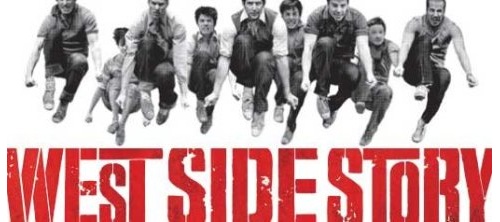
Musical
Musique: Leonard Bernstein • Paroles: Stephen Sondheim • Livret: Arthur Laurents • Production originale: 23 versions mentionnées
Dispo: Résumé Synopsis Génèse Isnpiration Liste chansons
Genèse: Genesis of the concept In 1947, Jerome Robbins approached Leonard Bernstein and Arthur Laurents about collaborating on a contemporary musical adaptation of Romeo and Juliet. He proposed that the plot focus on the conflict between an Irish American Roman Catholic family and a Jewish family living on the Lower East Side of Manhattan, during the Easter–Passover season. The girl has survived the Holocaust and emigrated from Israel; the conflict was to be centered around anti-Semitism of the Catholic "Jets" towards the Jewish "Emeralds" (a name that made its way into the script as a reference). Eager to write his first musical, Laurents immediately agreed. Bernstein wanted to present the material in operatic form, but Robbins and Laurents resisted the suggestion. They described the project as "lyric theatre", and Laurents wrote a first draft he called East Side Story. Only after he completed it did the group realize it was little more than a musicalization of themes that had already been covered in plays like Abie's Irish Rose. When he opted to drop out, the three men went their separate ways, and the piece was shelved for almost five years. In 1955, theatrical producer Martin Gabel was working on a stage adaptation of the James M. Cain novel Serenade, about an opera singer who comes to the realization he is homosexual, and he invited Laurents to write the book. Laurents accepted and suggested Bernstein and Robbins join the creative team. Robbins felt if the three were going to join forces, they should return to East Side Story, and Bernstein agreed. Laurents, however, was committed to Gabel, who introduced him to the young composer/lyricist Stephen Sondheim. Sondheim auditioned by playing the score for Saturday Night, his musical that was scheduled to open in the fall. Laurents liked the lyrics but was not impressed with the music. Sondheim did not care for Laurents' opinion. Serenade ultimately was shelved. Laurents was soon hired to write the screenplay for a remake of the 1934 Greta Garbo film The Painted Veil for Ava Gardner. While in Hollywood, he contacted Bernstein, who was in town conducting at the Hollywood Bowl. The two met at the Beverly Hills Hotel, and the conversation turned to juvenile delinquent gangs, a fairly recent social phenomenon that had received major coverage on the front pages of the morning newspapers due to a Chicano turf war. Bernstein suggested they rework East Side Story and set it in Los Angeles, but Laurents felt he was more familiar with Puerto Ricans and Harlem than he was with Mexican Americans and Olvera Street. The two contacted Robbins, who was enthusiastic about a musical with a Latin beat. He arrived in Hollywood to choreograph the dance sequences for The King and I, and he and Laurents began developing the musical while working on their respective projects, keeping in touch with Bernstein, who had returned to New York. When the producer of The Painted Veil replaced Gardner with Eleanor Parker and asked Laurents to revise his script with her in mind, he backed out of the film, freeing him to devote all his time to the stage musical. Collaboration and developmentIn New York, Laurents went to the opening night party for a new play by Ugo Betti, and there he met Sondheim, who had heard that East Side Story, now retitled West Side Story, was back on track. Bernstein had decided he needed to concentrate solely on the music, and he and Robbins had invited Betty Comden and Adolph Green to write the lyrics, but the team opted to work on Peter Pan instead. Laurents asked Sondheim if he would be interested in tackling the task. Initially he resisted, because he was determined to write the full score for his next project (Saturday Night had been aborted), but Oscar Hammerstein convinced him that he would benefit from the experience, and he accepted. Meanwhile, Laurents had written a new draft of the book changing the characters' backgrounds: Anton, once an Irish American, was now of Polish and Irish descent, and the formerly Jewish Maria had become a Puerto Rican. The original book Laurents wrote closely adhered to Romeo and Juliet, but the characters based on Rosaline and the parents of the doomed lovers were eliminated early on. Later the scenes related to Juliet's faking her death and committing suicide also were deleted. Language posed a problem; four-letter curse words were uncommon in the theatre at the time, and slang expressions were avoided for fear they would be dated by the time the production opened. Laurents ultimately invented what sounded like real street talk but actually was not: "cut the frabba-jabba", for example.[12] Sondheim converted long passages of dialogue, and sometimes just a simple phrase like "A boy like that would kill your brother", into lyrics. With the help of Oscar Hammerstein, Laurents convinced Bernstein and Sondheim to move "One Hand, One Heart", which he considered too pristine for the balcony scene, to the scene set in the bridal shop, and as a result "Tonight" was written to replace it. Laurents felt that the building tension needed to be alleviated in order to increase the impact of the play's tragic outcome, so comic relief in the form of Officer Krupke was added to the second act. He was outvoted on other issues: he felt the lyrics to "America" and "I Feel Pretty" were too witty for the characters singing them, but they stayed in the score and proved to be audience favorites. Another song, "Kid Stuff", was added and quickly removed during the Washington, D.C. tryout when Laurents convinced the others it was helping tip the balance of the show into typical musical comedy. Bernstein composed West Side Story and Candide concurrently, which led to some switches of material between the two works. Tony and Maria's duet, "One Hand, One Heart", was originally intended for Cunegonde in Candide. The music of "Gee, Officer Krupke" was pulled from the Venice scene in Candide. Laurents explained the style that the creative team finally decided on: "Just as Tony and Maria, our Romeo and Juliet, set themselves apart from the other kids by their love, so we have tried to set them even further apart by their language, their songs, their movement. Wherever possible in the show, we have tried to heighten emotion or to articulate inarticulate adolescence through music, song or dance." The show was nearly complete in the fall of 1956, but almost everyone on the creative team needed to fulfill other commitments first. Robbins was involved with Bells Are Ringing, then Bernstein with Candide, and in January 1957 A Clearing in the Woods, Laurents' latest play, opened and quickly closed. When a backers' audition failed to raise any money for West Side Story late in the spring of 1957, only two months before the show was to begin rehearsals, producer Cheryl Crawford pulled out of the project. Every other producer had already turned down the show, deeming it too dark and depressing. Bernstein was despondent, but Sondheim convinced his friend Hal Prince, who was in Boston overseeing the out-of-town tryout of the new George Abbott musical New Girl in Town, to read the script. He liked it but decided to ask Abbott, his longtime mentor, for his opinion, and Abbott advised him to turn it down. Prince, aware that Abbott was the primary reason New Girl was in trouble, decided to ignore him, and he and his producing partner Robert Griffith flew to New York to hear the score.[19] In his memoirs, Prince recalled, "Sondheim and Bernstein sat at the piano playing through the music, and soon I was singing along with them." Production period Prince began cutting the budget and raising money. Robbins then announced he did not want to choreograph the show, but changed his mind when Prince agreed to an eight-week dance rehearsal period (instead of the customary four), since there was to be more dancing in West Side Story than in any previous Broadway show, and allowed Robbins to hire Peter Gennaro as his assistant.[20] Originally, when considering the cast, Laurents wanted James Dean for the lead role of Tony, but the actor had died before hearing of it. Sondheim found Larry Kert and Chita Rivera, who created the roles of Tony and Anita, respectively. Getting the work on stage was still not easy. Bernstein told Rolling Stone: "Everyone told us that [West Side Story] was an impossible project ... And we were told no one was going to be able to sing augmented fourths, as with "Ma-ri-a" ... Also, they said the score was too rangy for pop music ... Besides, who wanted to see a show in which the first-act curtain comes down on two dead bodies lying on the stage?... And then we had the really tough problem of casting it, because the characters had to be able not only to sing but dance and act and be taken for teenagers. Ultimately, some of the cast were teenagers, some were 21, some were 30 but looked 16. Some were wonderful singers but couldn't dance very well, or vice versa ... and if they could do both, they couldn't act." Throughout the rehearsal period, the New York newspapers were filled with articles about gang warfare, keeping the show's plot timely. Robbins kept the cast members playing the Sharks and the Jets separate in order to discourage them from socializing with each other and reminded everyone of the reality of gang violence by posting news stories on the bulletin board backstage. Robbins wanted a gritty realism from his sneaker- and jeans-clad cast. He gave the ensemble more freedom than Broadway dancers had previously been given to interpret their roles, and the dancers were thrilled to be treated like actors instead of just choreographed bodies. As the rehearsals wore on, Bernstein fought to keep his score together, as other members of the team called on him to cut out more and more of the sweeping or complex "operatic" passages. Columbia Records initially declined to record the cast album, saying the score was too depressing and too difficult. There were problems with Oliver Smith's designs. His painted backdrops were stunning, but the sets were, for the most part, either shabby looking or too stylized. Prince refused to spend money on new construction, and Smith was obliged to improve what he had as best he could with very little money to do it. The pre-Broadway run in Washington, D.C. was a critical and commercial success, although none of the reviews mentioned Sondheim, listed as co-lyricist, who was overshadowed by the better-known Bernstein. Bernstein magnanimously removed his name as co-author of the lyrics, although Sondheim was uncertain he wanted to receive sole credit for what he considered to be overly florid contributions by Bernstein. Robbins demanded and received a "Conceived by" credit, and used it to justify his making major decisions regarding changes in the show without consulting the others. As a result, by opening night on Broadway, none of his collaborators were talking to him. It has been rumored that while Bernstein was off trying to fix the musical Candide, Sondheim wrote some of the music for West Side Story, and that Bernstein's co-lyricist billing mysteriously disappeared from the credits of West Side Story during the tryout, presumably as a trade-off. However, Suskin states in Show Tunes that "As the writing progressed and the extent of Bernstein's lyric contributions became less, the composer agreed to rescind his credit...Contrary to rumor, Sondheim did not write music for the show; his only contribution came on "Something's Coming", where he developed the main strain of the chorus from music Bernstein wrote for the verse.) Original Broadway production After auditions in Washington, D.C. and Philadelphia beginning in August 1957, the original Broadway production opened at the Winter Garden Theatre on September 26, 1957 to positive reviews. The production was directed and choreographed by Jerome Robbins, produced by Robert E. Griffith and Harold Prince and starred Larry Kert as Tony, Carol Lawrence as Maria, Chita Rivera as Anita and David Winters as Baby John, the youngest of the gang members. Robbins won the Tony Award for Best Choreographer, and Oliver Smith won the Tony for Best Scenic Designer. Also nominated were Carol Lawrence, as Best Actress in a Supporting Role in a Musical, Max Goberman as Best Musical Director and Conductor, and Irene Sharaff for Best Costume Design. Carol Lawrence received the 1958 Theatre World Award. Lighting was designed by Jean Rosenthal. The production ran for 732 performances at the Winter Garden Theatre before touring and then returning to the Winter Garden Theatre in 1960 for another 253 performance engagement. The other principal or notable cast members in the original production were: Anybodys: Lee Becker, Riff: Michael Callan, A-Rab: Tony Mordente, Action: Eddie Roll, Big Deal: Martin Charnin, Gee-Tar: Tommy Abbott; Velma: Carole D'Andrea, Bernardo: Ken Le Roy, Chino: Jamie Sanchez, Nibbles: Ronnie Lee; Rosalia: Marilyn Cooper, Consuelo: Reri Grist, Teresita: Carmen Gutierrez, Francisca: Elizabeth Taylor; Lt. Schrank: Arch Johnson, Doc: Art Smith, and Krupke: William Bramley. Original London production The 1958 European premiere at the Manchester Opera House transferred to London, where it opened at Her Majesty's Theatre in the West End on Friday December 12, 1958 and ran until June 1961 with a total of 1,039 performances. Robbins directed and choreographed, and it was co-choreographed by Peter Gennaro, with scenery by Oliver Smith. Featured performers were George Chakiris, who won an Academy Award as Bernardo in the 1961 film version, as Riff, Marlys Watters as Maria, Don McKay as Tony, and Chita Rivera reprising her Broadway role as Anita. David Holliday, who had been playing Gladhand since the London opening, took over as Tony, playing opposite Roberta D'Esti's Maria, and Mary Preston as Anita. In February 1962, the West End (H. M. Tennent) production launched a five-month Scandinavian tour opening in Copenhagen, continuing to Oslo, Goteborg, Stockholm and Helsinki. Robert Jeffrey took over from David Holliday as Tony and Jill Martin played Maria. 1980 Broadway revival A Broadway revival opened at the Minskoff Theatre on February 14, 1980 and closed on November 30, 1980, after 333 performances. It was directed and choreographed by Robbins, with the book scenes co-directed by Gerald Freedman; Tom Abbott and Lee Becker Theodore assisted the choreography reproduction. The original scenic, lighting, and costume designs were used. It starred Ken Marshall as Tony, Hector Jamie Mercado as Bernardo, Josie de Guzman as Maria, and Debbie Allen as Anita. Both de Guzman and Allen received Tony Award nominations as Best Featured Actress in a Musical, and the musical was nominated as Best Reproduction (Play or Musical). Allen won the Drama Desk Award as Outstanding Featured Actress in a Musical. Other notable cast members in the revival included Brent Barrett as Diesel, Harolyn Blackwell as Francisca, Stephen Bogardus as Mouth Piece, Reed Jones as Big Deal, and Sammy Smith as Doc. Several dances from West Side Story were included in the Tony Award-winning 1989 Broadway production, Jerome Robbins' Broadway. 2009 Broadway revival In 2007, Arthur Laurents stated, "I've come up with a way of doing [West Side Story] that will make it absolutely contemporary without changing a word or a note." He directed a pre-Broadway production of West Side Story at the National Theatre in Washington, D.C. that ran from December 15, 2008 through January 17, 2009. The Broadway revival began previews at the Palace Theatre on February 23, 2009 and opened on March 19, 2009. The production wove Spanish lyrics and dialogue into the English libretto. The translations are by Tony Award winner Lin-Manuel Miranda. Laurents stated, "The musical theatre and cultural conventions of 1957 made it next to impossible for the characters to have authenticity. Every member of both gangs was always a potential killer even then. Now they actually will be. Only Tony and Maria try to live in a different world". In August 2009, some of the lyrics for "A Boy Like That" ("Un Hombre Asi") and "I Feel Pretty" ("Me Siento Hermosa"), which were previously sung in Spanish in the revival, were changed back to the original English.[36] However, the Spanish lyrics sung by the Sharks in the "Tonight" (Quintet) remained in Spanish. The cast featured Matt Cavenaugh as Tony, Josefina Scaglione as Maria and Karen Olivo as Anita. Olivo won the Tony Award for Best Featured Actress, while Scaglione was nominated for the award for Leading Actress. The cast recording won the Grammy Award for Best Musical Show Album. In July 2010, the producers reduced the size of the orchestra, replacing five musicians with an off-stage synthesizer. The production closed on January 2, 2011 after 748 performances and 27 previews. The revival sold 1,074,462 tickets on Broadway over the course of nearly two years.
Résumé: Située dans le New York du milieu des années 1950, l'intrigue cible surtout la rivalité entre Jets et Sharks, deux bandes de jeunes des bas-quartiers, pour le monopole du territoire. Les Sharks appartiennent à la première génération d'Américains émigrés de Porto Rico. Ils sont raillés par les Jets, jeunes de la classe ouvrière blanche qui se considèrent comme les véritables Américains car nés en Amérique, même si de parents eux-mêmes émigrés, qui d'Irlande ou de Suède ou encore de Pologne. Tony, amis du chef des Jets Riff, rencontre Maria, la sœur de Bernardo, chef des Sharks. Ils tombent amoureux pour le meilleur et le pire.
Création: 26/9/1957 - Winter Garden Theatre (Broadway) - représ.
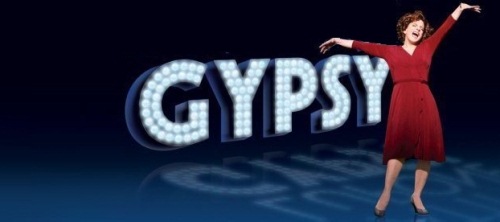
Musical
Musique: Jule Styne • Paroles: Stephen Sondheim • Livret: Arthur Laurents • Production originale: 13 versions mentionnées
Dispo: Résumé Synopsis Commentaire
Vidéos:
Gypsy s'inspire des mémoires (1957) de Gypsy Rose Lee, une célèbre strip-teaseuse et se concentre sur sa mère, Rose, dont le nom est devenu synonyme de «the ultimate show business mother». Le musical suit les rêves et les efforts de Rose pour présenter sur scène ses deux filles et jette un regard affectueux sur la dureté de la vie du show-business dans l'entre-deux guerres. Le personnage de Louise est basé sur Lee, et le personnage de June est basé sur la sœur de Lee, l'actrice June Havoc. Le musical contient de nombreuses chansons devenues des standards populaires: Everything's Coming up Roses, Together (Wherever We Go), Small World, Some People, Let Me Entertain You, All I Need Is the Girl, et Rose's Turn. Ce musical est souvent considéré comme l'une des plus belles réussites du théâtre musical classique du milieu du XXème siècle, souvent appelé le «book musical». Il est considéré comme le meilleur musical américain par de nombreux critiques et écrivains, parmi lesquels Ben Brantley («Ce qui est peut-être la plus grande de toutes les comédies musicales américaines...») et Frank Rich. Rich a écrit que «Gypsy n'est rien d'autre qu'une réponse provocante - et dans son propre style - au Roi Lear.» Le critique de théâtre Clive Barnes a écrit que «Gypsy est un des meilleurs musicals...» et décrit le personnage de Rose comme «l'un des rares personnages vraiment complexes dans la comédie musicale américaine... »
Genèse:
Résumé: Basé sur une histoire vraie, la vie de la légendaire artiste burlesque Gypsy Rose Lee, ce musical raconte l'histoire de Momma Rose et de ses deux filles, Baby June et Louise, voyageant dans tous les Etats-Unis pour présenter leur numéro de vaudeville. Mais les temps changent et les spectateurs deviennent de plus en plus exigeants. Et les deux jeunes filles ont leurs propres ambitions… La montée du burlesque s’impose et rien ne sera jamais la même chose pour Momma Rose.
Création: 21/5/1959 - Broadway Theatre (Broadway) - représ.
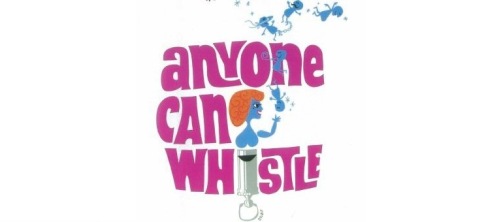
Musical
Musique: Stephen Sondheim • Paroles: Stephen Sondheim • Livret: Arthur Laurents • Production originale: 10 versions mentionnées
Dispo: Résumé Synopsis Commentaire Génèse Liste chansons
The story concerns a corrupt mayoress, an idealistic nurse, a man who may be a doctor, and various officials, patients and townspeople, all fighting to save a bankrupt town. This musical was Angela Lansbury's first stage musical role.
Genèse: Création) The show was first announced in The New York Times on October 5, 1961: "For the winter of 1962, {Arthur Laurents} is nurturing another musical project, The Natives Are Restless. The narrative and staging will be Mr. Laurent's handiwork; music and lyrics that of Stephen Sondheim. A meager description was furnished by Mr. Laurents, who refused to elaborate. Although the title might indicate otherwise, it is indigenous in content and contemporary in scope. No producer yet." No news of the show appeared until July 14, 1963, in an article in The New York Times about Kermit Bloomgarden, where it discussed the four shows he was producing for the coming season; two were maybes, two were definite. One of the latter being a Sondheim-Laurents musical (now named Side Show). In a letter to Bloomgarden from Laurents, he wrote, "I beg you not to mention the money problems or any difficulties to Steve anymore. It depresses him terribly and makes it terribly difficult for him to work... It is damn hard to concentrate ... when all the atmosphere is filled with gloom and forebodings about will the show get the money to go on? ... Spare him the gory details." This behavior is considered unusual for Laurents, which runs contrary to his current reputation. Sondheim discovered that Laurents hated doing backers' auditions and he took over that responsibility, playing and singing more than 30. They found 115 investors to back the $350,000 production, including Richard Rodgers and Sondheim's father. Eager to work with both Laurents and Sondheim, Angela Lansbury accepted the lead role as Mayoress Cora Hoover Hooper, despite her strong misgivings about the script and her ability to handle the score. Also signed were Lee Remick as Nurse Fay Apple and Harry Guardino as Hapgood. Laurents had wanted Barbra Streisand for the role of Fay, but she turned it down to star in Funny Girl. Following several weeks of rehearsals in New York City, the company moved to Philadelphia for a pre-Broadway tryout period. The reviews were brutal and the audiences hostile, talking back to the cast and walking out in droves. Director Laurents, ignoring criticism about the show's message being trite and its absurdist style difficult to comprehend, poured his energies into restaging rather than dealing with the crux of the problem. Also hampering the production was the fact that Lansbury was being overshadowed by actor Henry Lascoe (whose sudden death of a heart attack on stage, in California while taping a TV episode of "Day in Court", resolved that problem in an unexpected way). Productions After multiple revisions, the show opened on Broadway on April 4, 1964 at the Majestic Theatre, where it closed after 9 performances and 12 previews, unable to overcome the generally negative reviews it had received. Scenic design was by William and Jean Eckart, costume design by Theoni V. Aldredge, and lighting design by Jules Fisher.Choreographer Herbert Ross received the show's sole Tony Award nomination. The show became a cult favorite, and a truncated original cast recording released by Columbia Records sold well among Sondheim fans and musical theatre buffs. "There Won't Be Trumpets," a song cut during previews, has become a favorite of cabaret performers. On April 8, 1995, a staged concert was held at Carnegie Hall in New York City as a benefit for the Gay Men's Health Crisis. The concert was recorded by Columbia Records, preserving for the first time musical passages and numbers not included on the original Broadway cast recording. (For example, the cut song "It's Always A Woman" was included at this concert.) Lansbury served as narrator, with Madeline Kahn as Cora, Bernadette Peters as Fay, and Scott Bakula as Hapgood. Additional cast included Chip Zien, Ken Page, and Harvey Evans, the only original cast member to reprise his role. In 2003, Sony reissued the original Broadway cast recording on compact disc. Two revivals were staged that year, one in London, at the Bridewell Theatre, and one in Los Angeles, at the Matrix Theatre. The Ravinia Festival, Highland Park, Illinois presented a staged concert on August 26 and 27, 2005, with Audra McDonald (Fay), Michael Cerveris (Hapgood) and Patti LuPone (Cora). On January 11, 2008, Talk Is Free Theatre presented the Canadian professional premiere (in concert) at the Gryphon Theatre in Barrie, Ontario, with a fundraiser performance on January 13 at the Diesel Playhouse in Toronto, Ontario. It starred Adam Brazier as Hapgood, Kate Hennig as Cora, Blythe Wilson as Fay, and Richard Ouzounian as Narrator, who also served as director. Choreography was by Sam Strasfeld. Additional cast included Juan Chioran as Comptroller Shub, Jonathan Monro as Treasurer Cooley, and Mark Harapiak as Chief Magruder. Musical direction was provided by Wayne Gwillim. New York City Center Encores! presented a staged concert from April 8 through April 11, 2010, with Sutton Foster as Nurse Fay Apple, Donna Murphy as Mayoress Cora Hoover Hooper, and Raul Esparza as Hapgood, with direction and choreography by Casey Nicholaw. The production was the second most attended in Encores! history, and Stephen Sondheim was present at the post-matinee talkback on April 10. A London production of Anyone can Whistle opened at the Jermyn Street Studio Theatre, London, in association with Primavera Productions, running from March 10, 2010 to April 17, 2010. The director is Tom Littler, with Musical Director Tom Attwood, and a cast that includes Issy van Randwyck (Mayoress), Rosalie Craig (Nurse Fay Apple) and David Ricardo-Pearce (Hapgood).
Résumé: L'intrigue se déroule dans une ville imaginaire qui a fait faillite. Elle raconte l'histoire de l'épouse impopulaire du maire, manipulatrice et corrompue, Cora Hoover Hooper et de l'infirmière un peu idéaliste, Fay Apple. L'épouse du maire avec ses vieux complices politiques inventent un miracle - de l'eau qui coule d'une pierre - ce qui devrait attirer les dollars des touristes ("Miracle Song). Ils sont défiés par Fay Apple, une infirmière sceptique du sanatorium local, le "Cookie Jar", qui projette d'utiliser ses malades pour réfuter le miracle. Les malades du "Cookie Jar " se mélangent avec la population locale, en créant chaos et confusion ("A-1 March"). J. Bowden Hapgood, un malade pris pour un psychiatre, divise la ville en deux groupes, les sains et les fous, mais refuse de divulguer lequel est lequel. L'infirmière Apple, déterminée à apprendre la vérité au sujet du "miracle", se déguise comme un enquêteur français ("Come Play Wiz Me"). Elle est attirée par Hapgood mais a peur ("Anyone Can Whistle"). Finalement, l'infirmière Apple expose l'avidité et le cynisme des fonctionnaires élus. Elle et Hapgood sont unis ("With So Little to Be Sure Of"). Le thème de l'histoire est que la "normalité" est un euphémisme pour maîtrise de soi, conformité et ordre, et sa morale est que le vrai miracle est simplement d'être vivant.
Création: 4/4/1964 - Majestic Theatre (Broadway) - représ.
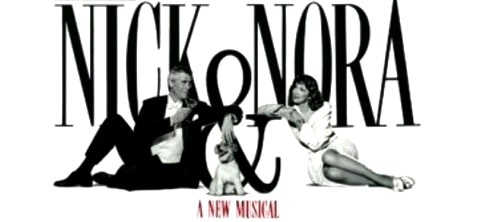
Musical
Musique: Charles Strouse • Paroles: Richard Jr Maltby • Livret: Arthur Laurents • Production originale: 1 version mentionnée
Dispo: Résumé Génèse Liste chansons
Genèse: Citing high costs, the producers opted to replace out-of-town tryouts (originally scheduled for the Mechanic Theatre, Baltimore, Maryland) with a longer than usual nine-week preview period of 71 previews in New York City. During this time the musical underwent extensive script rewrites, multiple song replacements, and a major cast change. (It was surpassed by a record of 15 weeks of previews for the Broadway musical Spider-Man: Turn Off the Dark which finally opened on Broadway in June 2011.) The Broadway production, directed by Laurents and choreographed by Tina Paul, finally opened on December 8, 1991 at the Marquis Theatre where, unable to overcome the bad publicity and brutal reviews, it ran for only nine performances. The cast included Barry Bostwick (Nick Charles), Joanna Gleason (Nora Charles), Christine Baranski, Debra Monk, Faith Prince, and Chris Sarandon. The show was nominated for the Tony Award for Best Original Score. An original cast recording was released on That's Entertainment Records (TER), and was re-released on Jay Records in 1997. In his memoir Original Story By, Laurents confessed he didn't realize until the show was in previews that the characters of Nick and Nora Charles were identified so closely with William Powell and Myrna Loy that the public would have difficulty accepting anyone else in the roles. He also felt the lengthy preview period, during which theatre gossips and newspaper columnists spread largely unfounded rumors about the show's mounting problems, helped destroy any chances of success it may have had.
Résumé: The plot involves witty and urbane high society couple Nick and Nora Charles, characters created by Dashiell Hammett in his novel The Thin Man, which inspired six films, a radio show, and a television series. In this version, the two are attempting to solve the murder of a bookkeeper on a film production in Hollywood. Crucially, the musical departs from the formula of previous incarnations, defined by the chemistry between Nick and Nora, by creating a subplot of marital woes and tensions between them.
Création: 8/12/1991 - Marquis Theatre (Broadway) - 9 représ.
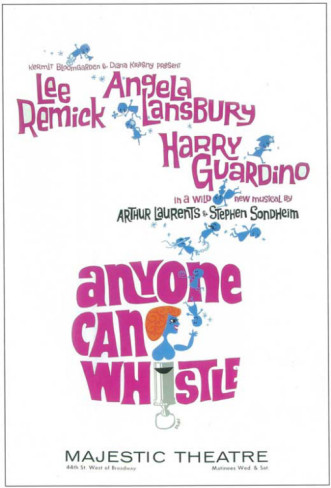
Version 1
Anyone can whistle (1964-03-Forrest Theatre-Philadelphia-1964) PRE-BROADWAY RUN
Type de série: OriginalThéâtre: Forrest Theatre (Philadelphia - Etats-Unis) Durée : 2 semaines Nombre : Première Preview : InconnuPremière : Monday 02 March 1964Dernière : Saturday 21 March 1964Mise en scène : Arthur Laurents • Chorégraphie : Herbert Ross • Producteur : Commentaires longs: Le public a rejeté le spectacle, intervenant et apostrophant les comédiens. Une vraie catastrophe.
The number of acts switched continually during previews.Presse : Très mauvaise!

Version 2
Anyone can whistle (1964-03-Majestic Theatre-Broadway)
Type de série: OriginalThéâtre: Majestic Theatre (Broadway - Etats-Unis)
Durée : 1 semaine Nombre : 12 previews - 9 représentationsPremière Preview : Tuesday 24 March 1964Première : Saturday 04 April 1964Dernière : Saturday 11 April 1964Mise en scène : Arthur Laurents • Chorégraphie : Herbert Ross • Producteur : Commentaires longs: The number of acts switched continually during previews.
Un vrai flop total….Presse : Très mauvaise!
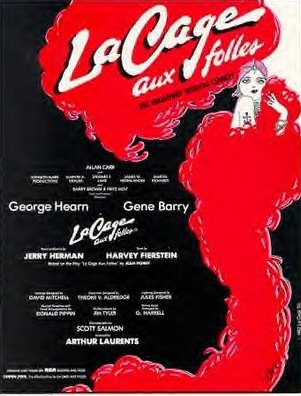
Version 3
Cage aux Folles (La) (1983-08-Palace Theatre-Broadway)
Type de série: OriginalThéâtre: Palace Theatre (Broadway - Etats-Unis) Durée : 4 ans 2 mois 3 semaines Nombre : 15 previews - 1761 représentationsPremière Preview : Tuesday 09 August 1983Première : Sunday 21 August 1983Dernière : Saturday 14 November 1987Mise en scène : Arthur Laurents • Chorégraphie : Scott Salmon • Producteur :

Version 4
Cage aux Folles (La) (1986-05-London Palladium-Londres)
Type de série: RevivalThéâtre: Palladium Theatre (Londres - Angleterre) Durée : 8 mois 4 semaines Nombre : 301 représentationsPremière Preview : InconnuPremière : Wednesday 07 May 1986Dernière : Saturday 31 January 1987Mise en scène : Arthur Laurents • Chorégraphie : Scott Salmon • Producteur : Avec : Denis Quilley (Georges), George Hearn (Albin), Jonathan Morris (Jean-Michel), Wendy Roe (Anne), Brian Glover (Edouard Dindon), Julia Sutton (Mme Dindon), Phyllida Law (Jacqueline), Donald Waugh (Jacob)Commentaires : Based on the 1973 play by Jean Poiret, this was a huge risk - Broadway’s first ever gay musical. The first-night audience seemed a little shocked by the opening chorus of transvestite Cagelles, but dutifully applauded. Then came the crunch: a “love scene” between two men, Georges and Albin – openly expressed with physical contact. There were nervous titters. It was dicey, but George Hearn and Gene Barry played as though they were alone with their love. And then Gene sang, so simply, so truly, a love ballad. The audience cheered and applauded.
They were applauding the song, of course, but this applause was an historical moment in musical theatre history. This was the very moment when a gay relationship was accepted on equal terms with every other boy-girl relationship in the world of musical comedy. More followed when, at the end of the first act, Albin, dressed as a drag queen, sang “I Am What I Am”. If he was scared, he didn’t show it. In the wings the whole company was in tears. Much of the audience was in tears. This was another historical moment: a plea for tolerance and liberation, and one that didn’t fall on deaf ears. Broadway’s first “gay musical” turned out to be a 1,176 performance mega-hit.
And yet the London production ran just nine months: the gay bits were not going to shock a London audience. London had seen it all before.
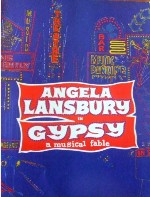
Version 5
Gypsy (1973-05-Piccadilly Theatre-London)
Type de série: Original LondonThéâtre: Piccadilly Theatre (Londres - Angleterre) Durée : 9 mois 1 semaine Nombre : 300 représentationsPremière Preview : Tuesday 29 May 1973Première : Tuesday 29 May 1973Dernière : Saturday 02 March 1974Mise en scène : Arthur Laurents • Chorégraphie : Robert Tucker • Producteur : Commentaires longs: Avec Angela Lansbury
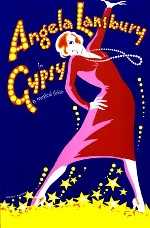
Version 6
Gypsy (1974-09-Winter Garden Theatre-Broadway)
Type de série: RevivalThéâtre: Winter Garden Theatre (Broadway - Etats-Unis) Durée : 3 mois 1 semaine Nombre : 4 previews - 120 représentationsPremière Preview : Thursday 19 September 1974Première : Monday 23 September 1974Dernière : Saturday 04 January 1975Mise en scène : Arthur Laurents • Chorégraphie : Robert Tucker • Producteur : Commentaires longs: Avec Angela Lansbury
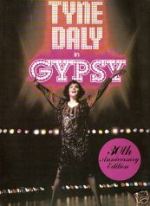
Version 7
Gypsy (1989-10-Broadway Run-Broadway)
Type de série: RevivalThéâtre: Broadway Run (Broadway - Etats-Unis)Durée : 1 an 8 mois 1 semaine Nombre : 23 previews - 476 représentationsPremière Preview : Friday 27 October 1989Première : Thursday 16 November 1989Dernière : Sunday 28 July 1991Mise en scène : Arthur Laurents • Chorégraphie : Producteur : Commentaires longs: Avec Tyne Daly

Version 8
Gypsy (1989-10-Broadway Run-St. James Theatre-Broadway)
Type de série: RevivalThéâtre: St. James Theatre (Broadway - Etats-Unis)Durée : 1 an 1 mois 3 semaines Nombre : Première Preview : Friday 27 October 1989Première : Thursday 16 November 1989Dernière : Sunday 06 January 1991Mise en scène : Arthur Laurents • Chorégraphie : Producteur : Commentaires longs: Avec Tyne Daly

Version 9
Gypsy (1991-04-Broadway Run-Marquis Theatre-Broadway)
Type de série: RevivalThéâtre: Marquis Theatre (Broadway - Etats-Unis)Durée : 3 mois 1 semaine Nombre : Première Preview : Thursday 18 April 1991Première : Thursday 18 April 1991Dernière : Sunday 28 July 1991Mise en scène : Arthur Laurents • Chorégraphie : Producteur : Commentaires longs: Avec Tyne Daly
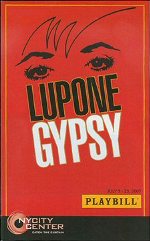
Version 10
Gypsy (2007-07-City Center-Broadway) Encores!
Type de série: RevivalThéâtre: City Center (New-York - Etats-Unis) Durée : 2 semaines Nombre : Première Preview : Monday 09 July 2007Première : Monday 09 July 2007Dernière : Sunday 29 July 2007Mise en scène : Arthur Laurents • Chorégraphie : Bonnie Walker • Producteur : Commentaires longs: Avec Patti LuPone
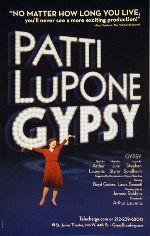
Version 11
Gypsy (2008-03-St James Theatre-Broadway)
Type de série: RevivalThéâtre: St. James Theatre (Broadway - Etats-Unis) Durée : 9 mois 2 semaines Nombre : 27 previews - 332 représentationsPremière Preview : Monday 03 March 2008Première : Thursday 27 March 2008Dernière : Sunday 11 January 2009Mise en scène : Arthur Laurents • Chorégraphie : Jerome Robbins • Producteur : Commentaires longs: Avec Patti LuPone
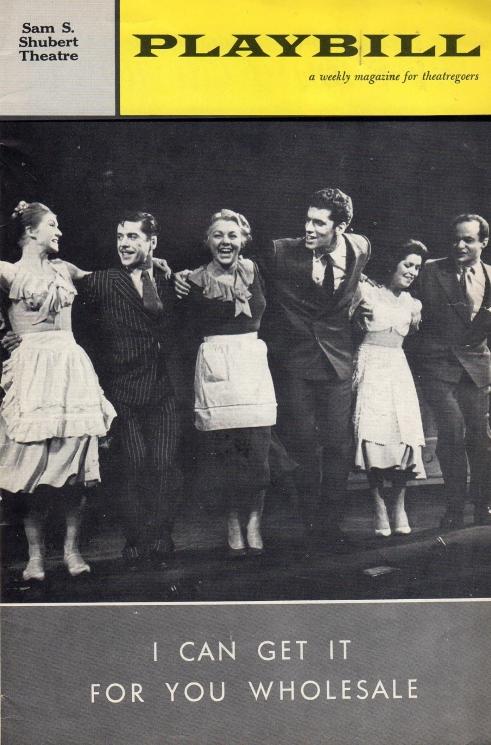
Version 12
I Can Get It for You Wholesale (1962-03-Broadway Run)
Type de série: OriginalThéâtre: Broadway Run (Broadway - Etats-Unis)Durée : 8 mois 3 semaines Nombre : 2 previews - 300 représentationsPremière Preview : Wednesday 21 March 1962Première : Thursday 22 March 1962Dernière : Saturday 08 December 1962Mise en scène : Arthur Laurents • Chorégraphie : Herbert Ross • Producteur : Commentaires : Tryout Dates
Shubert Theatre [Philadelphia, PA] 12/2/1962 - 24/2/1962
Colonial Theatre [Boston, MA] 27/2/1962 - 17/3/1962
Broadway Run
Shubert Theatre [New York, NY] 22/3/1962 - 29/9/1962
Broadway Theatre [New York, NY] 1/10/1962 - 8/12/1962

Version 13
I Can Get It for You Wholesale (1962-03-Broadway Run-Broadway Theatre)
Type de série: OriginalThéâtre: Shubert Theatre (Broadway - Etats-Unis)Durée : 2 mois 1 semaine Nombre : Première Preview : Monday 01 October 1962Première : Monday 01 October 1962Dernière : Saturday 08 December 1962Mise en scène : Arthur Laurents • Chorégraphie : Herbert Ross • Producteur : Commentaires : Tryout Dates
Shubert Theatre [Philadelphia, PA] 12/2/1962 - 24/2/1962
Colonial Theatre [Boston, MA] 27/2/1962 - 17/3/1962
Broadway Run
Shubert Theatre [New York, NY] 22/3/1962 - 29/9/1962
Broadway Theatre [New York, NY] 1/10/1962 - 8/12/1962

Version 14
I Can Get It for You Wholesale (1962-03-Broadway Run-Shubert Theatre)
Type de série: OriginalThéâtre: Shubert Theatre (Broadway - Etats-Unis)Durée : 6 mois 1 semaine Nombre : Première Preview : Wednesday 21 March 1962Première : Thursday 22 March 1962Dernière : Saturday 29 September 1962Mise en scène : Arthur Laurents • Chorégraphie : Herbert Ross • Producteur : Commentaires : Tryout Dates
Shubert Theatre [Philadelphia, PA] 12/2/1962 - 24/2/1962
Colonial Theatre [Boston, MA] 27/2/1962 - 17/3/1962
Broadway Run
Shubert Theatre [New York, NY] 22/3/1962 - 29/9/1962
Broadway Theatre [New York, NY] 1/10/1962 - 8/12/1962
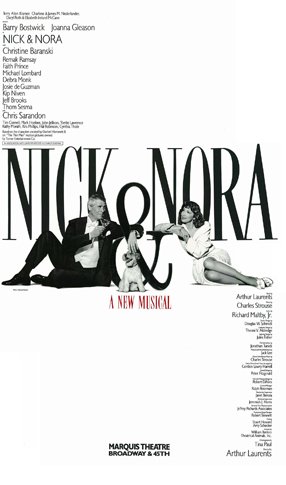
Version 15
Nick and Nora (1991-12-Marquis Theatre-Broadway)
Type de série: OriginalThéâtre: Marquis Theatre (Broadway - Etats-Unis) Durée : 1 semaine Nombre : 71 previews - 9 représentationsPremière Preview : Tuesday 08 October 1991Première : Sunday 08 December 1991Dernière : Sunday 15 December 1991Mise en scène : Arthur Laurents • Chorégraphie : Tina Paul • Producteur : Presse : In his review in Time, William A. Henry III called the production "a crashing bore - cranky and arbitrary as a love story, tedious and pointless as a murder mystery, ham-handed as comedy, clubfooted as dance, at best wanly pleasant as music." He added, "A few scenes work, some quite well. The final 10 minutes achieve a truth and simplicity underscoring the barren brittleness of what has gone before. But ultimately the show fails at its most basic task: making audiences care about, or for that matter simply believe in, the characters."
Frank Rich in his review in the New York Times wrote:"...this musical will no doubt always be remembered, and not without fondness, for its troubled preview period, its much-postponed opening, its hassles with snooping journalists and its conflict with the city's Consumer Affairs Commissioner. Indeed, the story of 'Nick and Nora' in previews, should it ever be fully known, might in itself make for a riotous, 1930's-style screwball-comedy musical. But the plodding show that has emerged from all this tumult is, a few bright spots notwithstanding, an almost instantly forgettable mediocrity."
Because of its mediocre reception, the musical is often referred to as "Nick & Snore-a".
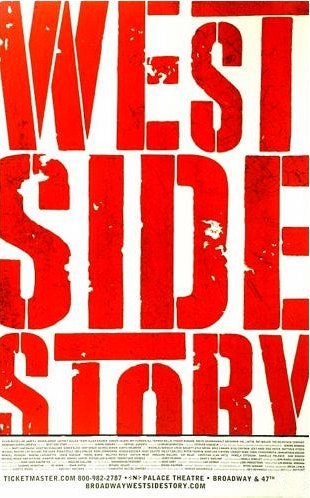
Version 16
West Side Story (2009-02-Palace Theatre-Broadway)
Type de série: RevivalThéâtre: Palace Theatre (Broadway - Etats-Unis) Durée : 1 an 9 mois 2 semaines Nombre : 27 previews - 748 représentationsPremière Preview : Monday 23 February 2009Première : Thursday 19 March 2009Dernière : Sunday 02 January 2011Mise en scène : Arthur Laurents • Jerome Robbins • Chorégraphie : Jerome Robbins • Producteur : Avec : Matt Cavenaugh (Tony), Josefina Scaglione (Maria), George Akram (Bernardo), Cody Green (Riff), Karen Olivo (Anita), Nicholas Barasch (Kiddo (alt.)), Steve Bassett (Lt. Schrank), Kyle Brenn (Kiddo (alt.)), Joshua Buscher (Diesel), Isaac Calpito (Inca)